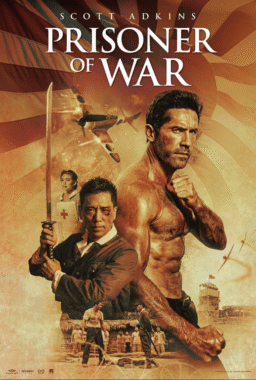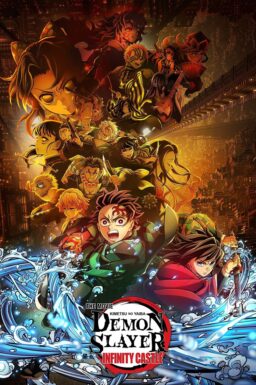At noon Sunday, I attended a press screening of “Indiana Jones and the Kingdom of the Crystal Skull.” I returned to my laptop, wrote my review and sent it off, convinced I would be in a minority. I loved it, but then I’m also the guy who loved “Beowulf,” and look at the grief that got me. Now Indy’s early reviews are in, and I’m amazed to find myself in an enthusiastic majority. The Tomatometer stands at 78, and the more populist IMDb user rating is 9.2 out of 10. All this before the movie’s official opening on Thursday.
Why did I think I would be in a minority? Because of what David Poland at Movie City News poetically described as “one idiot.” As everybody knows, an exhibitor attended a closed-door screening last week, and filed a review with the Ain’t It Cool News website. This single wrong-headed, anonymous review was the peg on which The New York Times based a breathless story on a negative early reaction to the film. That story inspired widespread coverage: Were Spielberg and Lucas making a mistake by showing their film at Cannes? Would it turn out to be a fiasco like showing “The Da Vinci Code” there? The Code got terrible reviews, and only managed to gross something like $480 million dollars at the box office–suggesting, if not to the Times, that even a negative reception at Cannes might not cut Indy off at the knees.
Maybe even Harrison Ford was influenced by Mr. Wrong-Headed. “It’s not unusual for something that is popular to be disdained by some people,” he said at the press conference following the Cannes screening, “and I fully expect it.” What he got was a standing ovation in the Palais des Festivals that night. The S.O. was heralded in all the coverage, even though any Cannes veteran would tell you it meant–nothing. Every film gets a standing ovation at the black-tie evening premiere at Cannes, unless it is so bad it transcends awfulness.
There are really two premieres at Cannes: The press screening at 8:30 a.m., and the black-tie, or “official,” screening in the evening. Both fill the vast, 3,500-seat Lumiere auditorium. The morning offers a tough audience: Critics, festival programmers, people who have may have seen hundreds of other movies in this room. They are free with their boos, and if a movie doesn’t work for them have been known to shout at the screen on their way out.
The black-tie screening, on the other hand, includes many people who have a financial motive for wanting a film to succeed: The worldwide distributors and exhibitors, their guests, and lots of Riviera locals. Or they may have been given tickets and are thrilled to be there. (“I recognized the woman sitting next to me from my hotel,” Rex Red told me one year. “It was my maid.”) In some cases, they may simply think it’s good manners to cheer movie stars who flew all the way to Cannes. Then too, the stars are seated in the front row of the balcony. Everybody below stands up after the movie, turns around, and sees them bathed in spotlights. The Standing O creates itself.
Nevertheless, I believe the S.O. was genuine the other night. It takes a cold heart and a weary imagination to dislike an “Indiana” film with all of its rambunctious gusto. With every ounce of its massive budget, it strains to make us laugh, surprise us, go over the top with preposterous action. “Kingdom of the Crystal Skull” does those things under the leadership of Spielberg, who knows as much as any man ever has about what reaches the popular imagination. The early reviewer on the web site, on the other hand, knew as little.
Spielberg at heart will always be that kid who sneaked onto the back lot at Universal and talked himself into a job. He’s the kind of man who remains in many ways a boy. He likes neat stuff. He thinks it would be fun to have Indiana and friends plunge over three waterfalls, not one. He knows that we know what back projection is, and he uses it blatantly (Indy arriving in frame as if he had jumped there, while the background rolls past a little out of focus). He knows back projection feels differently that perfect digital backgrounds — it feels more like a movie. He likes boldly-faked editing sequences: We see the heroes in medium shot at the edge of a waterfall, we see a long shot of their boat falling to what would obviously be instant oblivion below, and then he shows the heroes surfacing together and near the shore (no rapids!) and spitting out a little water. The movie isn’t a throwback to the Saturday serials of the 1930s and 1940s. It’s what they would have been if they could have been.
Consider another action series, the Matrix films. They’re so doggedly intense and serious. They seem to think the future of the universe really is a stake. There’s a role for serious action, but not when it’s hurled at us in a cascade of quick-cutting and QueasyCam shots that make dramatic development impossible. Even if the they are constructed out of wall-to-wall implausibility, the Indy films have characters who aren’t frantic. Harrison Ford and Spielberg are wise: They know a pumped-up Indy would seem absurd. Indiana Jones himself is so laid back he sometimes seems to be watching the movie with us. He’s happy to be aboard, just as long, of course, as he can stay in the boat/truck/airplane.











